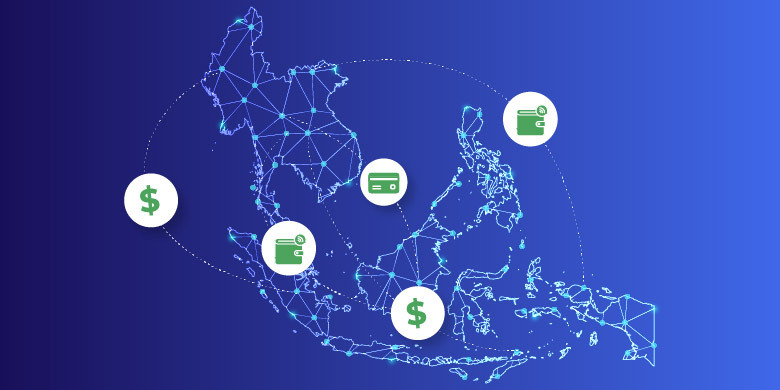There’s no way to overestimate the impact that Southeast Asia is having on global eCommerce markets. In 2020, SEA eCommerce grew by an astounding 63% to reach a total volume of $62 billion.
While the pandemic has been a driving force, the fact that SEA has been a highly digitized region, to begin with, plays a big role. In the six largest economies — Thailand, Malaysia, Singapore, Indonesia, Vietnam and the Philippines — 70% of the population is online. Tens of millions of people came online in 2020 alone. So it’s no wonder that digital payment transaction volumes in those countries grew by 3% last year – with fewer people paying in cash and opting instead for eWallet payment methods.
Accept local payments to unleash Indonesia’s full eCommerce potential.
Let’s take a closer look at three countries in particular — Malaysia, Vietnam and the Philippines — to get an even clearer picture of what’s happening with SEA eCommerce trends.
Malaysia: Bank transfer apps are the favorite alternative payment methods.
During the first months of the pandemic, Malaysian eCommerce volumes increased by 149%. Today, nearly half of online purchases in Malaysia are made through bank transfer apps, making that payment option the most popular payment option for online purchases, followed by credit cards and cash. Some of the eWallets that Malaysia loves using are Boost, GrabPay, Touch n Go, Financial Process Exchange, or FPX.
The Philippines: A big eCommerce boom but cash remains popular.
eCommerce volume in the Philippines exploded by 376% in the first half of 2020. Customers who used to shop at brick-and-mortar businesses find it easy to buy many of those same goods online as the number of registered online businesses surged. Still, shoppers are not ready to make a significant change in how they pay, as cash remains the most popular way of making online purchases — it was used in 37% of online purchases — followed by bank transfers and cards.
Vietnam: Credit cards and debit cards are still preferred.
Vietnam’s payment landscape is changing — and growing — by the day. In the last three years, the number of fintech startups more than tripled to what is now a total of 118. Of those, nearly one-third (31%) offer payment-processing services. As of October 2020, Vietnam was home to dozens of licensed non-bank payment-service providers, including such popular eWallets as MoMo, Payoo, Moca, ZaloPay and ViettelPay.
eWallets didn’t come to replace any of the existing payment methods though, but to amplify the local payment diversity: More than one-third of Vietnamese shoppers (35%) choose to pay with credit or debit cards, followed by bank transfers (26%) and cash (21%).
How it all adds up
It’s no surprise that different countries’ populations just like in Latin America and Africa region have their own unique buying habits and preferences. New players in the payment ecosystem such as eWallets and cards are gaining share in the payments mix pie while coexisting along with traditional methods like cash, cards and other alternative payment methods to reach the vast majority of the eShoppers.
Southeast Asia is riding a new wave of regional growth and it is certainly attracting all eyes at the moment. And we are watching closely, as usual, with the finger on the payments pulse to keep you informed and connected to local payment trends, payment methods and players.
Learn more about the payment methods we support in the APAC region or contact us to understand these markets’ payment landscape better.
